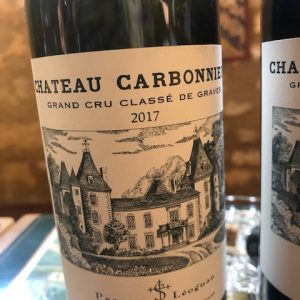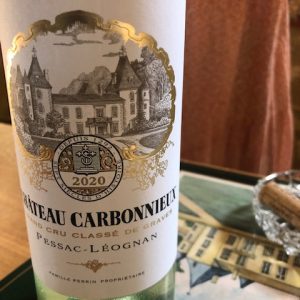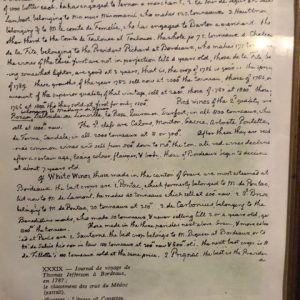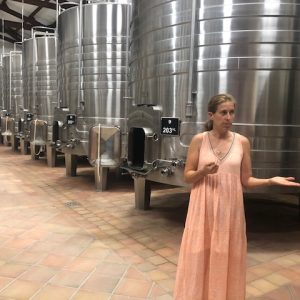In the footsteps of Thomas Jefferson in Bordeaux
Château Carbonnieux is a winery in Graves, an important subregion of the Bordeaux wine region. It is situated on the left bank of the Garonne River, in the upstream part of the region, southeast of the city Bordeaux.
One of the photos is of Thomas Jefferson’s diary entry of his visit to Château Carbonnieux in 1787. Jefferson was then the US ambassador to France, before he became US president
Graves is the only Bordeaux subregion which is famed for all three of Bordeaux’ three main wine types—reds, dry whites and sweet wines. Red wines dominate the region’s total production, although Sauternes may be the most famous.
The name Graves derives from its intensely gravelly soil, the result of glaciers from the Ice Age — most importantly, this soil facilitates water drainage.
The Graves is considered the birthplace of claret. Graves wine production for export dates back to Eleanor of Aquitaine, who married Henry II, King of England, creating a flourishing trade between both countries: wine versus coal and iron. In the Middle Ages, the wines that were first exported to England were produced in this area.
I was told that Château Carbonnieux wines are now being adversely affected by global warming. In particular, the alcohol percentage has risen from 11 percent to 14 percent. This means that it is becoming more like a hot climate wine. As a result, the local wine industry is experimenting with warm climate grape varieties from Spain and Italy which could be adopted in the future in order to adapt to global warming. Even with such adaptation, Bordeaux wine may never be the same again.
I was also told that Château Carbonnieux and other Graves wines are also experiencing stiff competition from New World wines, often developed by French winemakers as part of their global operations. All this means that Bordeaux, in many ways the leading French wine, with a grand history, is somewhat fragile and vulnerable.
I tasted two excellent wines. First, a red 2017 Château Carbonnieux Grand Cru Classé, made of 60 percent Cabernet Sauvignon, 35 percent Merlot, and small amounts of Cabernet Franc and Petit Verdot. This wine was beautifully rich and balanced, and according to my guide could age nicely for a couple of decades. The second was a white 2020 Château Carbonnieux Grand Cru Classé, made of 65 percent Sauvignon Blanc and 35 percent Semillon. This one had nice fruit flavours, balanced with delicate acidity




